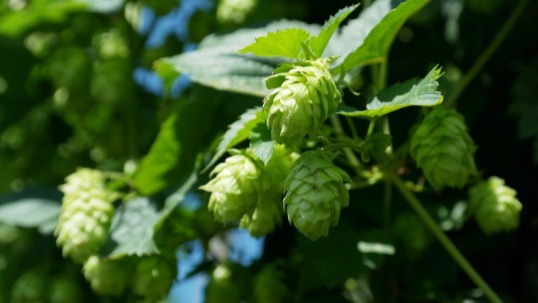
Amo il gusto della birra, la sua schiuma bianca, viva, la sua profondità ramata, il mondo che sorge all’improvviso attraverso le pareti brune e umide del vetro, la spuma negli angoli, questo scriveva il poeta gallese Dylan Thomas in un elogio alla sua bevanda preferita. La birra ha costituito, fin dai tempi più remoti, un elemento di rilevanza primaria nelle abitudini alimentari di tutti i popoli. Negli ultimi tempi il mondo della birra ha visto il proliferare di piccoli birrifici artigianali che hanno raggiunto l’eccellenza grazie alla passione ed all’utilizzo di materie prime autoctone. Bionde, Ambrate e Scure trovano degli abbinamenti insuperabili con numerosi piatti e preparazioni gastronomiche. Il principio fondamentale dell’abbinamento è di porre l’attenzione sui sapori di entrambi i prodotti, anche per quanto riguarda gusti e retrogusti. Le caratteristiche del cibo e della birra non si devono sovrapporre rischiando di prevalere l’una sull’altra, ma devono essere omogenee per dare rotondità al naso e al palato. Uno degli elementi che caratterizza l’armonia di una birra è il malto, si parte dai malti più chiari come pilsner e pale fino a quelli più scuri o speciali, caramellati, tostati e torrefatti. Con aromi di maltazioni più chiare avremo sapori come miele, vaniglia, crosta di pane: sono affini a formaggi freschi, dessert, frutta frescae ottimi con pesce crudo. Per le birre caramellate sono ottimi abbinamenti: carni bianche, formaggio media stagionatura, verdure, cipolle, aglio e dolci impreziositi da caramello. Infine le birre parecchio maltate trovano un punto d’incontro con le note tostate di arrosti e carni alla griglia, pesce affumicato accompagnando anche cioccolato e formaggio molto stagionato o piccante, piatti arricchiti con nocciole e caffè. Il luppolo è un altro fattore che caratterizza in modo significativo una birra e può conferire aromi e profumi che cambiamo a seconda della provenienza del luppolo stesso. Il luppolo europeo ha un aroma erbaceo e floreale e le birre con queste caratteristiche sono ideale da abbinare a formaggi erbacei e preparazioni con erbe aromatiche. I luppoli americani, australiani e neo zelandesi hanno un aroma agrumato, citrico e si accompagnano perfettamente con piatti che richiamano aromi di arancia, limone, lime e mandarino. I luppoli inglesi hanno sentori terrosi, pepati e possono essere abbinati perfettamente con piatti a base di funghi, frutti di bosco, tartufo e tutto ciò che concerne il bosco e sotto bosco. La fermentazione è il processo più delicato della produzione e può influire in modo importante sulle caratteristiche aromatiche del prodotto. La scelta dei lieviti viene fatta a seconda della tipologia di birra da produrre. La bassa fermentazione, come pils, lager, helles, bock, ottenere una birra con un ridotto contenuto in esteri, fenoli ed alcol superiori e circa il 90% delle birre prodotte nel mondo sono a bassa fermentazione. L’alta fermentazione, pale ale, bitter, porter, stout weizen, permette di realizzare birre con aromi più particolari ed intensi, mentre la fermentazione spontanea, lambic, faro, kriek, framboise, consente ai lieviti e ai batteri diffusi nell’ambiente di introdursi naturalmente nel mosto, l’intervento di altri tipi di lieviti e batteri lattici danno alla birra un profilo sensoriale unico. L’armonia tra le sensazioni del cibo e della bevanda è il perfetto risultato della sinergia tra sapore e gusto. Non resta dunque che provare e testare i risultati dell’abbinamento birro-gastronomico!
I love the taste of beer, its white, alive foam, its coppery depth, the world suddenly rising through the brown, damp walls of glass, the foam in the corners, this is what the Welsh poet Dylan Thomas wrote in a eulogy to his favourite drink. Beer has been an element of primary importance in the eating habits of all peoples since ancient times. In recent times the world of beer has seen the proliferation of small craft breweries that have achieved excellence thanks to the passion and use of indigenous raw materials. Blondes, Amber and Hatchet find unsurpassed combinations with numerous dishes and gastronomic preparations. The fundamental principle of pairing is to pay attention to the flavours of both products, also in terms of taste and aftertaste. The characteristics of food and beer should not overlap and risk prevailing over each other, but should be homogeneous to give roundness to the nose and palate. One of the elements that characterizes the harmony of a beer is the malt, starting from the lightest malts such as pilsner and shovels to the darkest or special ones, caramelized, toasted and roasted. With aromas of lighter malts we will have flavors such as honey, vanilla, bread crust: they are similar to fresh cheese, desserts, fresh fruit and excellent with raw fish. For caramelized beers are excellent combinations: white meat, medium aged cheese, vegetables, onions, garlic and desserts enriched with caramel. Finally, the very malty beers find a meeting point with the toasted notes of roasts and grilled meats, smoked fish accompanying also chocolate and very mature or spicy cheese, dishes enriched with hazelnuts and coffee. Hops is another factor that significantly characterizes a beer and can give aromas and scents that change depending on the origin of the hops. European hops have a herbaceous and floral aroma and beers with these characteristics are ideal to combine with herbaceous cheeses and preparations with aromatic herbs. American, Australian and New Zealand hops have a citrus and citric aroma and go perfectly with dishes that recall orange, lemon, lime and mandarin aromas. English hops have earthy, peppery scents and can be perfectly combined with dishes based on mushrooms, berries, truffles and everything related to the forest and under the forest. Fermentation is the most delicate process of production and can have an important influence on the aromatic characteristics of the product. The choice of yeasts is made according to the type of beer to be produced. The low fermentation, such as pils, lager, helles, bock, to obtain a beer with a reduced content of esters, phenols and higher alcohol and about 90% of the beers produced in the world are low fermentation. The high fermentation, pale ale, bitter, porter, stout weizen, allows to make beers with more particular and intense aromas, while the spontaneous fermentation, lambic, lighthouse, kriek, framboise, allows yeasts and bacteria spread in the environment to enter naturally in the wort, the intervention of other types of yeasts and lactic acid bacteria give the beer a unique sensory profile. The harmony between the sensations of food and drink is the perfect result of the synergy between taste and flavour. All that remains is to try and test the results of the beer-gastronomic pairing!





